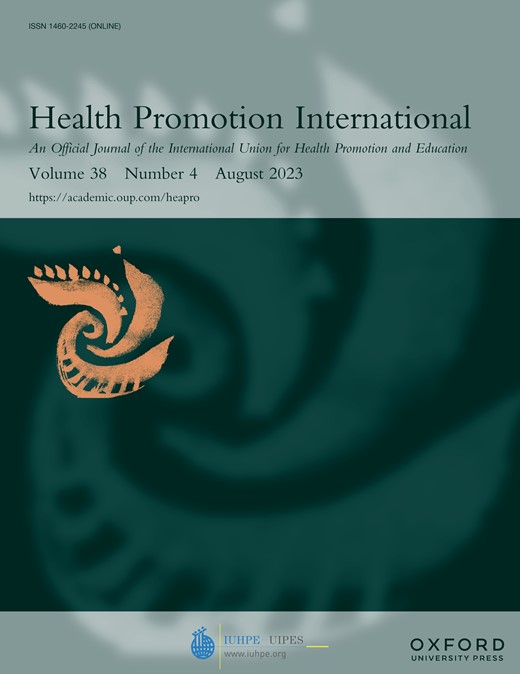-
Views
-
Cite
Cite
Paulo Farinatti, A heuristic model for health-related autonomy based on health promotion ideas: the ‘Health–Autonomy Interaction Model’, Health Promotion International, Volume 38, Issue 4, August 2023, daab178, https://doi.org/10.1093/heapro/daab178
Close - Share Icon Share
Summary
Autonomy and health are central concepts in health promotion literature. Operational frameworks explaining their relationship are important to support health-related autonomy actions. This study presents a heuristic model describing the ‘health–autonomy relationship’ based on health promotion ideas, particularly Antonovsky’s and Nordenfeldt’s works. Central to the ‘Health–Autonomy Interaction Model’ is the existence of inter-related dimensions of autonomy: thought, intention and action, all influenced by negative and positive factors of physical and social environments (extrinsic factors) and personal resources to cope with life needs (intrinsic factors). Intrinsic factors comprise elements often included in definitions of negative (ill-health) and positive health (well-being and fitness), therefore establishing a bridge between conceptions of health and autonomy. Unique to this biopsychosocial framework is the differentiation between the potential for being autonomous and the degree of autonomy effectively achieved—the potential autonomy reflects the individual set of abilities to accomplish any task, while the expressed autonomy results from the extent to which this satisfies the demands of the environment and vital goals. Conceptualizing autonomy in this manner highlights that it is a multi-factorial capability referred to external conditions, reflecting a cluster of abilities to be and do things indicative of a self-empowered life. Concluding, our model moves the concept of health-related autonomy from a focus on ‘disease’ and ‘incapacity’ to a broader view in which the meaning of ‘capacity’ depends on the achievement of ‘self-fulfillment’ in given circumstances. The notion of autonomy is regarded as a precondition for health and an essential priority in health promotion.



